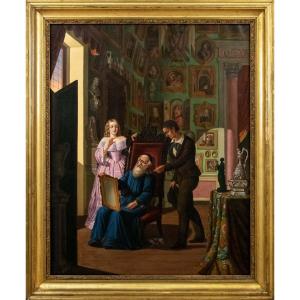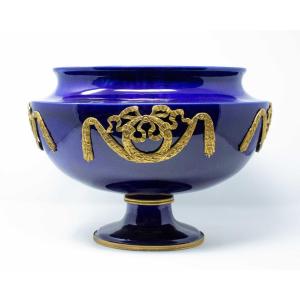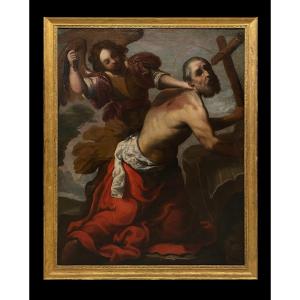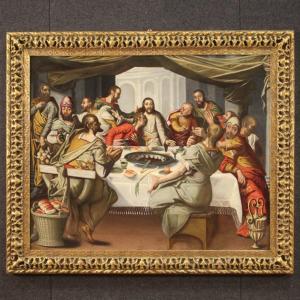Virgin Assunta
Oil on canvas, cm 93 x 81
Frame, cm 110 x 97
The present Assumption of the Virgin innovatively takes up a part of the iconography typical of the dogma of the Immaculate Conception, that is the aureole made up of twelve stars. The comparison a posteriori and by traditional resonance of this attribute to the figure of the Immaculate, (in the texts, this crown appears only in chapter 12 of the Revelation and in reference to the woman surrounded by sun that Saint John admires in vision) makes the same crown element not uniquely significant incorruptible purity but, more generally, the eternal essence of Our Lady in human and divine time. The absence, in this work, of the attributes certainly characterizing the Immaculate Conception, such as the trampled snake and the moon or terrestrial globe walked by Mary, qualify the painted instant as following to the dormitio Virginis, in which the archangel Michael with Jesus descends to earth to reunite the soul and body of the Virgin and to move her into paradise among a whirlwind of angels (Golden Legend, Jacopo da Varazze, 13th century).
The present painting is suitable for the lesson of the so-called 17th century classicism of central Italic area, even if a tactile cangiantism clears it from the stylistic and compositional constraints of this "current". It is impossible to ignore the figurative references to Guido Reni (Bologna, 1575 - ivi, 1642), really resembling the solid volumes of his pupil Giovanni Andrea Sirani (Bologna, 1610 - ivi, 1670).
A reflection on the teaching of the great painting of the early Emilian century leads, in this Assumption, to the use of a perfectly modern artistic lexicon, where the exceptional wonder that evokes the work overcomes any school model.
The object is in good condition














































 Le Magazine de PROANTIC
Le Magazine de PROANTIC TRÉSORS Magazine
TRÉSORS Magazine Rivista Artiquariato
Rivista Artiquariato